Brightening up balmy strolls and providing food for hungry pollinators, here are just some of the UK’s most beautiful summer wildflowers to look out for on your next walk.
12 beautiful summer wildflowers to spot
Dawn Monrose

Les Binns
1. Yellow-rattle
Rarely seen save for in our last remaining wildflower meadows, yellow-rattle is an unmistakable and really interesting bloom.
Its name comes from its seedpods – brush past yellow-rattle at the height of summer and you’ll hear the tiny seeds rattling away inside. It is also semi-parasitic, feeding off the nutrients of vigorous grasses and keeping them in check. This allows more delicate wildflowers to recolonise, which is why yellow-rattle is often used to turn intensively managed grassland back into species-rich meadow.
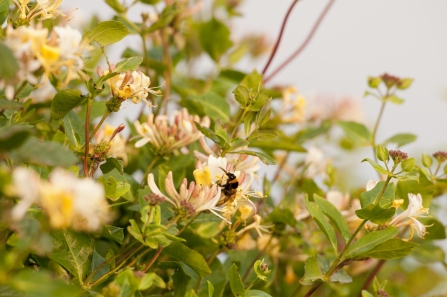
Ross Hoddinott/2020VISION
2. Honeysuckle
Honeysuckle is undoubtedly one of our best-loved British wildflowers, unfurling its petals from June to provide night-time nectar for moths like the elephant hawkmoth and, in August, producing clusters of red berries that feed hungry birds.
Honeysuckle is common in hedgerows, scrub, woodlands and gardens – take time to stop and inhale the sweet scent on your way past.

Zsuzsanna Bird
3. Common knapweed
Common knapweed grows everywhere from grasslands and roadside verges to woodland rides, clifftops and lawns across Lancashire, Manchester and North Merseyside. But don’t let it’s ‘common’ name fool you, this plant is incredibly important for wildlife. Butterflies including the common blue, small skipper and meadow brown feed from it from June to September alongside bees, beetles and a host of other insects.
John Lamb
4. Grass of Parnassus
From one of the most common summer flowers to one of the rarest, grass-of-Parnassus (also known as the ‘bog star’) is a wetland specialist that is disappearing from much of the UK along with its associated habitat. Over the years, as land has been drained for agriculture and development, many of our wetlands have disappeared or become fragmented, leading to the decline of not just grass-of-Parnassus but wetland wildlife in general. However, we are working tirelessly to protect wetlands by working with planners, developers and landowners, and have ensured a robust population of grass-of-Parnassus thrives at Upper Coldwell Reservoir near Nelson.
Grass-of-Parnassus has beautiful white petals adorned with translucent, grass-like green stripes and flowers from June to September.
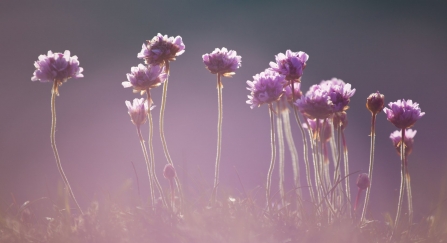
Mark Hamblin/2020VISION
5. Thrift
Sea cliffs adorned with earthy lichens and the contrasting blush-pink flowers of thrift are one of our most spectacular summer sights. This coastal summer wildflower emerges in April and blooms right through to October, so keep your eyes peeled on your walks through local sand dunes and inland marshes. Barnaby’s Sands and Burrow’s Marsh on the east bank of the River Wyre is a fantastic place to see cushion-like clumps of thrift, as well as the purple flower-heads of sea aster and sea lavender, breeding skylarks and reed buntings.
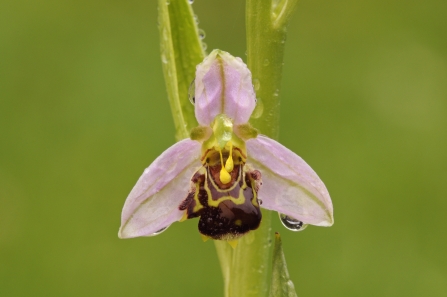
Dawn Monrose
6. Bee orchid
Did you know that bee orchids evolved to trick solitary bees into pollinating them? These wily summer wildflowers look like female bees; the male tries to mate with them and ends up pollinating the flowers instead. The right bee species doesn’t actually live here in the UK, so our bee orchids are self-pollinating.
Bee orchids offer fleeting beauty, flowering only from June until July, so don’t miss your chance to get out and see them on dry, chalk and limestone grasslands. They have even been known to turn up on industrial estates, but some of the best places to see them in Lancashire are Heysham Nature Reserve, Salthill Quarry and Brockholes Nature Reserve.

Amy Lewis
7. Cow parsley
It isn’t hard to see how this wildflower earned the nickname ‘Queen Anne’s lace’. The umbrella-like clusters of white, frothy flowers bloom along roadsides, hedgerows and woodland edges from May to June, feeding insects including orange-tip butterflies and teeny marmalade hoverflies.
Crush one of the leaves between your fingers to release a heady aniseed scent.
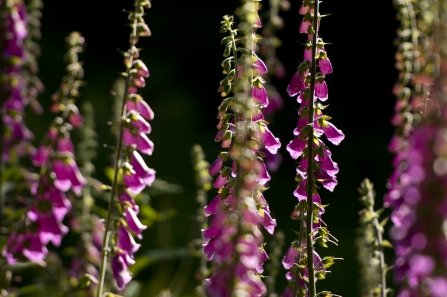
Ross Hoddinott/2020VISION
8. Foxglove
No matter where you live, you are bound to have foxgloves growing nearby come June-time. Woodlands, gardens, moorlands, coasts, roadside verges, waste ground: they can pop up absolutely anywhere. The beautiful bell-shaped flowers of foxgloves are a favourite of moths and long-tongued bumblebees like the garden bumblebee.
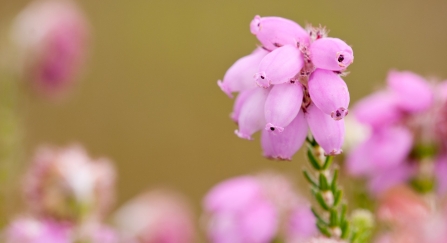
Ross Hoddinott/2020VISION
9. Cross-leaved heath
Our mosslands and moorlands come alive in summer and are the perfect place to spot some of our most spectacular summer wildflowers: heathers. Cross-leaved heath is one of the most beautiful, peppering bogs, heathland and moorland with bright pink clusters between June and September. It is particularly important as the main nectar source for the rare large heath butterfly (also known as the Manchester argus) which we are reintroducing to the Manchester mosses after a local extinction of around 150 years.
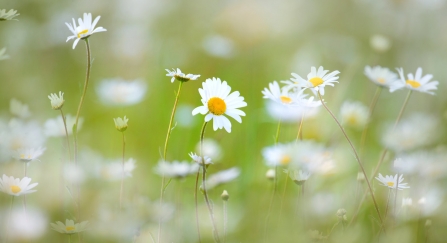
Jon Hawkins - Surrey Hills Photography
10. Oxeye daisy
In my opinion, the oxeye daisy is one of the loveliest and most underrated summer wildflowers. It looks like an overgrown daisy, the huge flower heads nodding on roadside verges and waste ground, as well as in traditional hay meadows and along field margins from June to September. It’s a sure sign that summer has arrived and pollinators love it, particularly hoverflies, solitary bees and butterflies like small tortoiseshells.
Did you know that oxeye daisies are so bright they appear to 'glow' in the evening? This earned them the nicknames ‘moon daisy’ and ‘moonpenny’.
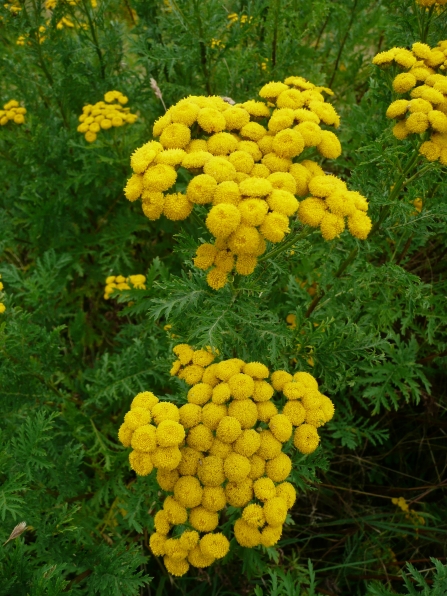
Karen Lloyd
11. Tansy
If its name wasn’t whimsical enough, the bright yellow bobble-heads of tansy are like something out of The Secret Garden. Striking and aromatic, it has a long history of use for medicinal purposes and was cultivated by the Ancient Greeks.
Tansy grows at our Summerseat Nature Reserve and, elsewhere in the UK (the River Ouse in York and Woodwalton Fen NNR in Cambridgeshire), it is the main foodplant of the rare tansy beetle. Sadly, this beautiful jewel of an insect is now only found at these two sites.
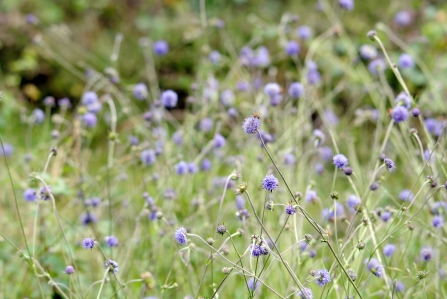
Amy Lewis
12. Devil’s-bit scabious
One of my favourite late summer wildflowers, devil’s-bit scabious brightens up damp meadows and marshes with pin-cushion pops of purple from July to October. Bees, moths and butterflies absolutely love it, and it’s particularly popular with the rare marsh fritillary.
Legend has it that the Devil grew angry about the medicinal properties of devil’s-bit scabious and tried to get rid of it by biting the roots off. The plant’s short and stubby roots and its associated legend lent it its name.


